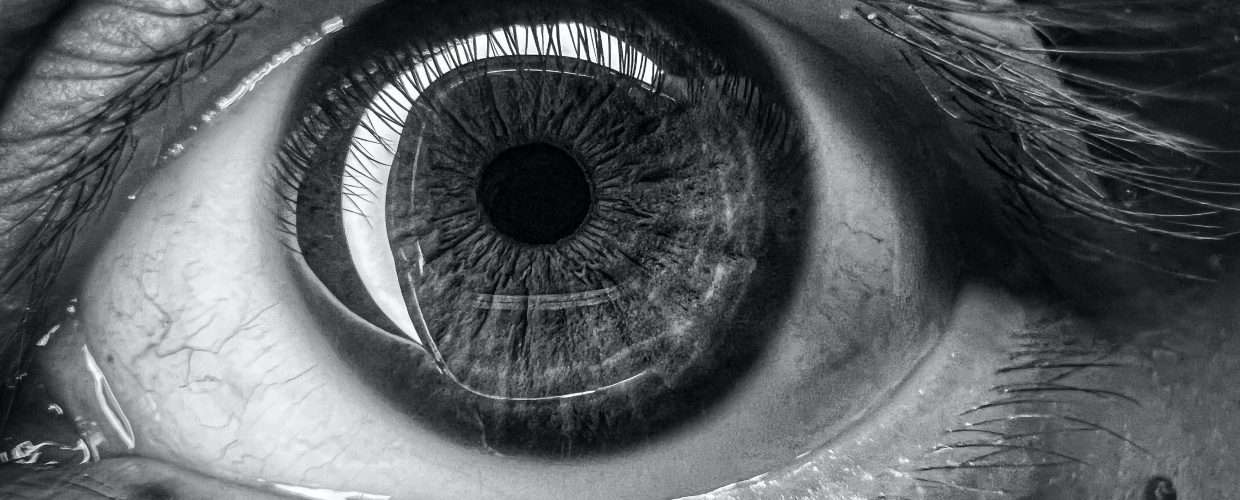As designers in today’s fast paced world we spend most of our time working on computers and executing tasks on programs like Photoshop. When we are not working we are consuming information on the web, communicating with friends and family or entertaining ourselves. All of this is done through mobile phones or desktops, making the screens on our devices the most regular objects our eyes have to deal with. According to an eye care research into professions with the highest amount of screen time designers fall into the category of professionals that spend up to 18 hours on their screens. Spending this much time on screens not surprisingly produces a lot of unwanted sensations on the eyes categorized as digital eye strain. The three most noticeable forms of digital eye strain include tired, dry/itchy eyes and loss of sleep.
Tired eyes: Our eyes get tired from having to focus on screens which are always placed close to the eyes. This is bad for them as eyes need a mix of long and short distance objects to focus on.
Dry and Itchy eyes: Batting the eye lids spreads moisture content round the eyes but this happens less when using devices because we tend to keep our eyes open for longer periods in order not to miss what’s displaying on our screens. The result of this is a dry or itchy feeling due to less moisture in the eyes.
loss of sleep: we are wake during the day partly due to the intense blue light emitted from the sun which blocks the production of the sleep inducing hormone called melatonin. This same blue light is also emitted from screens and is absorbed extensively due to prolonged screen time. This keeps the melatonin hormone from creating its drowsy effect on the body at night and urges us to stay awake longer. Unfortunately, less sleep means more buildup of stress levels which in turn usually leads to other health issues.
Should devices be ditched?
of course not! The problem here isn’t the devices themselves but the way we use them as many devices are used under conditions that cause excessive strain to our eyes. Below are the best conditions under which they should be used.
1 Lighting
The amount of lighting in the room should be more than what your screen is emitting as the light quantity from devices are too low to be the chief lighting source for the eyes to depend on. If the retina has less light to work with and these goes on for hours you most likely will suffer an eye strain.
2 Avoid blue light
Many screen users subject their eyes to constant blue light emission from their devices which is actually a harsh color for the eyes. Lights with warmer rays are ideal for the eyes because they are more gentle. This blue light emission should be managed so the eyes don’t have to put up with them. Some devices will let you adjust the color emission to warmer tones and if they don’t have this feature consider getting warm color filters to place on your screen or wearing glasses with Warm coatings to keep blue rays away from your eyes.
3 The 20:20:20 rule
We place screens close to the eyes when using them and if you fall among the designers mentioned above this means screens are right in front of your eyes for a total of 18 hours. Having the eyes focus on only nearby objects isn’t good practice and you could shorten this by following the 20:20:20 rule. Every 20 minutes take a 20 second break and stare at something 20 feet away to give your eyes a break from starting at nearby screens. For those who might be worried about forgetting to observe this regularly, there are reminder apps like the Eye care 2020 that notifies you on times to take this break
4 Text sizes
The sizes of the text on devices should be larger than satisfactory to eliminate the pressure the eyes go through when discerning shapes .In practice it means if you can read properly with a font size of 12, then your font size should be adjusted to 14.
5 Use text with good contrast
Certain color pairings are harsh on the eyes. Bright text colors on bright backgrounds are difficult to discern and bad for the eyes while dark color texts on bright backgrounds are more discernable, thus better for the eyes. This is why most devices render text in black on white background. If you ever find yourself having to stare at the opposite then make an adjustment or avoid it if you can.
6 Blink more often
Blinking produces and spreads liquid around the eyes to keep it moist. However, when consuming content on screens we blink less because we unconsciously try to keep our eyes open so that we don’t miss anything thereby lessening the opportunity to moisten our eyes and increasing dryness and irritation. So when using screens consciously blink more because you certainly are not doing it enough.
7 Use screens less and sleep more.
Make conscious efforts to reduce screen time especially at night where there is less light for your eyes to work with. You could make a commitment to keep to a ‘no phone time’ schedule in the evenings where phones are used only when necessary. The goal is to increase the amount of time between when you use your phones and when you go to bed. This will increase the quality of your sleep and give your eyes longer hours for regeneration.
Keep your eyes safe
Design is a visual work which demands we use our eyes and having it deteriorate isn’t pleasant for anyone so have one of the screen practice mentioned above when using your screen. Note: extended screen time in itself doesn’t directly cause damages to the eyes but it contributes significantly to its weakening and acts as precursors to damaging factors.
